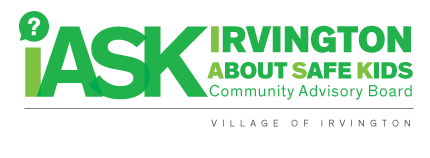As one of the country’s most popular holidays, St. Patrick’s Day is an opportunity for everyone to celebrate the roots of 34.2 million Americans with Irish ancestry. Tragically, March 17 has become one of the nation’s deadliest holidays.
According to the National Highway Traffic Safety Administration (NHTSA), during the 2014 St. Patrick’s Day holiday period (6 p.m. March 16 to 5:59 a.m. March 18), more than a quarter (28%) of all motor vehicle crash fatalities involved drunk drivers. The early hours of March 18 were especially deadly: between midnight and 5:59 a.m., nearly half of all crash fatalities involved drunk drivers. In fact, from 2010 to 2014, almost three-fourths of the drunk-driving fatalities during this holiday period involved drivers who had blood alcohol contents (BACs) well above the .08 limit, with 266 drunk-driving fatalities total.
Pedestrians walking while intoxicated are also at risk as lack of attention increases the risk of getting hit by a vehicle. In 2014, 35 percent of the pedestrians killed in crashes had a blood alcohol content of .08 or higher.
There is some good news, however. The number of fatalities over this holiday period decreased nationally from 32 in 2013 to 29 in 2014. Likewise, the number of fatalities involving drunk drivers declined from more than one-third to one-fourth.
“We are greatly encouraged by the downward trend in fatalities,” said Irvington Chief of Police Mike Cerone. “However, we still want to encourage everyone to make a plan before heading out to the festivities. Understand the dangers of drinking and driving. Buzzed or drunk, you should not drive. Designate a sober driver before you and your friends go out to celebrate St. Patrick’s Day. Do not wait until you’ve already been drinking to find a sober driver. Remember: Buzzed Driving is Drunk Driving. Even one drink is dangerous if you are behind the wheel of a car.”
Let’s make 2017 safer. Use this party-planning checklist to stay safe this St. Patrick’s Day.
- PARTY PREPARATION: Designate a sober, reliable driver to get you home safely. Find the name of a taxi company (or two), and keep their numbers in your phone, or download the NHTSA SaferRide app, available for Android and Apple.
- ON ST. PATRICK’S DAY: Before you take your first sip of green beer, leave your keys at home or give them to a friend. Ensure your designated driver has committed to a sober evening. If you’re the designated driver, do not drink. Your friends are relying on you, as are the people with whom you share the road. Enjoy non-alcoholic beverages and tweet your VIP (very important partygoer) status online using the hashtag #designateddriver.
- EVERY DAY: First, commit to driving sober today, St. Patrick’s Day, and every day. Second, always keep the number of a taxi company in your phone or in your wallet so you have a backup plan if you find yourself in need of a sober driver. Last, be sure to download NHTSA’s SaferRide app. Using your location, the app can find a taxi nearby, as well as help you contact a friend from your selected list of contacts. If you’re impaired, don’t let pride get in the way of calling a sober friend or family member to get you home safely. Help spread the word about the dangers of drunk driving, and the resources available to keep the streets safe.
Fact: In 2014, on average, one person was killed every 53 minutes in a drunk-driving crash in the United States. That totaled 9,967 drunk-driving fatalities that year. Too many people are not getting the message. Drunk driving is deadly and illegal. In fact, even if you have a BAC under .08, you could still be arrested and convicted of drunk driving.
To drink and drive is a crime —you put yourself and others at risk. The consequences are often fatal. If you see a drunk driver on the road, contact local police when it is safe to do so. You could save a life.
For more information, visit www.trafficsafetymarketing.gov or www.iask-cab.org.





 As kids get older and alcohol and drugs enter the picture, parents are faced with a unique set of challenges. They can simply sit back and hope their kids will “get through it,” or they can take an active role in learning about alcohol and drugs – and helping their kids to do the same. Parents can be a primary source of positive and reliable information. In fact, research has shown that kids who have conversations with their parents and learn a lot about the dangers of alcohol and drug use are 50% less likely to use these substances than those who don’t have such conversations.
As kids get older and alcohol and drugs enter the picture, parents are faced with a unique set of challenges. They can simply sit back and hope their kids will “get through it,” or they can take an active role in learning about alcohol and drugs – and helping their kids to do the same. Parents can be a primary source of positive and reliable information. In fact, research has shown that kids who have conversations with their parents and learn a lot about the dangers of alcohol and drug use are 50% less likely to use these substances than those who don’t have such conversations.





